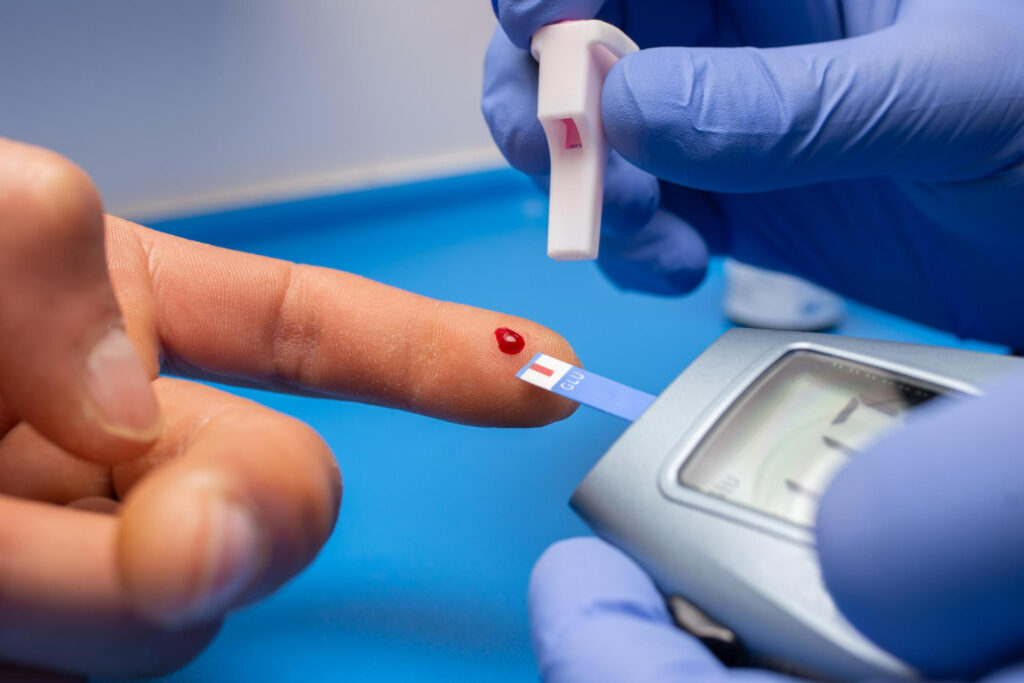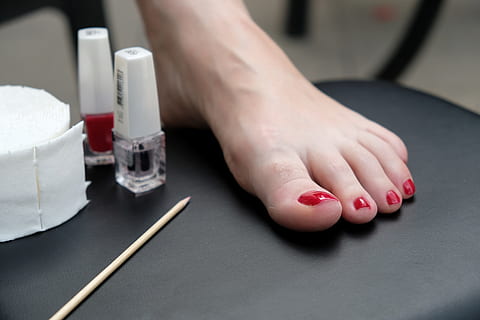Decoding HbA1c : A Key Indicator for Diabetes
Are you still fasting in the morning before sample collection, hoping for an accurate blood sugar report?
Then its time to understand the significance of HbA1c. As a diabetic or pre-diabetic, closely monitoring
your blood sugar levels is mandatory. When you consult your diabetologist next, he must see if your blood sugar levels have been consistent. These blood sugar levels should hold true irrespective of what
you eat or drink daily. That’s where HbA1c comes in!
What is “significance of HbA1c”?
An individual’s average blood glucose levels over two to three months can be determined by analyzing
the glycated hemoglobin (HbA1c) in their blood. Confusing?
Let’s break it up!
The term “glycated hemoglobin” or HbA1c refers to the hemoglobin (Hb) that randomly links (glycates) with red blood cells. The likelihood of this connection occurring increases when blood glucose levels are high. The amount of HbA1c in the bloodstream can be used to estimate the average blood glucose level throughout a period of 120 days since that is the average lifespan of a red blood cell (RBC) in the blood.
HbA1c values are higher in diabetics because they often have more available blood glucose.
Importance of HbA1c in diabetes
The HbA1c test procedure is the gold standard for monitoring blood sugar levels. The HbA1c level is
now suggested as a standard of care (SOC) for testing and monitoring diabetes, especially type 2 diabetes.
But don’t fasting blood sugar reports and post-prandial blood sugar levels give you similar results?
The goal of the fasting blood glucose test is to determine how much glucose is present in your blood
after you’ve fasted for at least 8 hours and no more than 16 hours. A non-diabetic person’s fasting blood sugar level should ideally not be higher than 100 mg/dL.
Post-prandial blood glucose testing is done to determine how your blood sugar levels have changed
following a meal. It typically takes place two hours after eating. The target postprandial blood glucose
level should be less than 140 mg/dL.
Yet diabetologists swear by the significance of HbA1c. This is because of the following:
- ● HbA1c levels are unaffected by what you eat or drink. It is not determined by how long you fast
or when you eat. - ● High cortisol levels in stress, anxiety, and poor mental health conditions do not affect HbA1c
levels. - ● It is unaffected by transient hormonal peaks since it is a marker of long-term blood sugar levels.
- ● Studies show that it can be used by the vast majority of people worldwide with zero to minimal
variability among different ethnic origins and genetic inheritance. - ● At the normal body temperature of 98.4℉, HbA1c is a more stable form of glucose than the frank
glucose molecules in the blood. - ● It does not need any preparation. If your diabetologist detects signs and symptoms of diabetes,
you can get the HbA1c test done immediately. - ● It tells us how well your diabetes is being managed; it is hard to fool your doctor that way!
- ● It indicates if you are prone to other diabetes-related health conditions.
However, certain conditions can alter the physiology of red blood cells, for example, anemia. Anemia
results in reduced hemoglobin quality and can give false HbA1c results.
HbA1c test procedure
The diabetologist can order this test as a routine procedure. Usually, you don’t need to be on an empty
stomach for the sample collection for HbA1c, unless the doctor wants to specifically monitor your fasting
blood sugar as well.
The concerned lab technician will draw blood from your arm and send it to a lab for HbA1c testing.
Finger prick tests require a single drop of blood to provide a reading, making them more practical for
children or those who have trouble delivering more extensive blood samples.
What is the best time for HbA1c test?
If you have recently been diagnosed with diabetes, pregnancy-associated diabetes, fluctuating HbA1c
readings, a change of medications or insulin dosages, or have a history of hypoglycemia (low blood
sugar), your doctor may advise quarterly monitoring (every 3 months).
Given that HbA1c is a measurement of average blood sugar over three months, performing HbA1c more
than four times a year makes no sense.
Understanding the HbA1c normal range
This is the tricky part since most of you need help understanding the readings. Today we shall study how
to read the reports together.
Typically, HbA1c is expressed as a percentage or in mmol/mol (mili-mols per mol). For instance, suppose your HbA1c is written as 6.6% (NGSP) and 49 mmol/mol (IFCC), it means that there are 49 molecules of glycated hemoglobin, or HbA1c, per 1000 hemoglobin (Hb) molecules. The same thing as a percentage is expressed as 6.6%.
Clinics are going towards using IFCC (2003) as the suggested measurement because it is more recent and precise. NGSP (1996) is an earlier study that focuses more on clinical outcomes than accuracy.
The Australian Diabetes Society, came up with a conversion table to help people worldwide in reading
the HbA1c values.
● NGSP value = 0.09148 × (IFCC value)+ 2.152
● IFCC value = 10.93 × (NGSP value) – 23.50
Scientific research clearly states the normal range for the HbA1c test procedure. The ranges are as
follows:
● The A1c range for a person without diabetes is 4% to 6%.
● A1c levels in diabetics will usually be in the range of 6.5% (47 mmol/mol).
● A1c ranges from 5.7% to 6.4% (39–46 mmol/mol) in pre-diabetes (a higher chance of developing
diabetes in the future).
HbA1c alone, might not be sufficient to identify diabetes. Other health factors and tests contribute to the
diagnosis.
Factors that can affect the HbA1c test procedure
Since HbA1c is dependent on hemoglobin, it can vary with all the factors that affect the quantity and
quality of hemoglobin in the blood. To discuss some of these factors:
1. Genetic variants of hemoglobin
Hemoglobin variations occur in certain diseases; hemoglobin S is seen in sickle cell anemia, and
hemoglobin E in beta-thalassemia. Results for HbA1c in those with high levels of hemoglobin variations
can be unreliable.
2. Gender
Studies suggest that glycated hemoglobin is well-defined in men only after a significant increase in blood sugar levels
and fat deposition in the body.
3. Age
HbA1c levels rise with age, even in the absence of diabetes. HbA1c is 0.5% higher in people over 70
years old as compared to those who are younger.
4. A recent blood donation
HbA1c drops following a blood donation. Therefore, after blood donation, even in diabetic patients,
HbA1c levels are probably going to be low.
5. Pregnancy
Studies suggest that in a typical, non-diabetic pregnancy, HbA1c values fall during the second trimester
and climb during the third.
Takeaway
The significance of HbA1c is a useful tool for diabetics to forecast their long-term health. Still, a high
reading may not necessarily indicate poor blood sugar maintenance and a good reading does not
guarantee that diabetes will not have long-term effects on you.
FAQ
What happens when HbA1c is high?
When HbA1c levels are high, it indicates that the average blood glucose levels over the past 2-3 months
have been elevated. If left untreated, high HbA1c levels can lead to various complications, such as an
increased risk of heart disease, eye damage, blindness, kidney damage, and slow wound healing. Use at-
home glucose monitoring and a healthy diet to help you manage diabetes.
What foods reduce Glycated Hb?
Foods that can help lower HbA1c levels include non-starchy vegetables, whole grains, beans and
legumes, fruits, nuts and seeds, and lean protein sources. Incorporating these foods into a healthy diet can help to regulate your blood sugar levels and improve insulin sensitivity.
Is fasting required for hba1c test?
No its last 3 months average blood glucose test and can be done anytime.
If you like this information, do share it with your friends and family.












